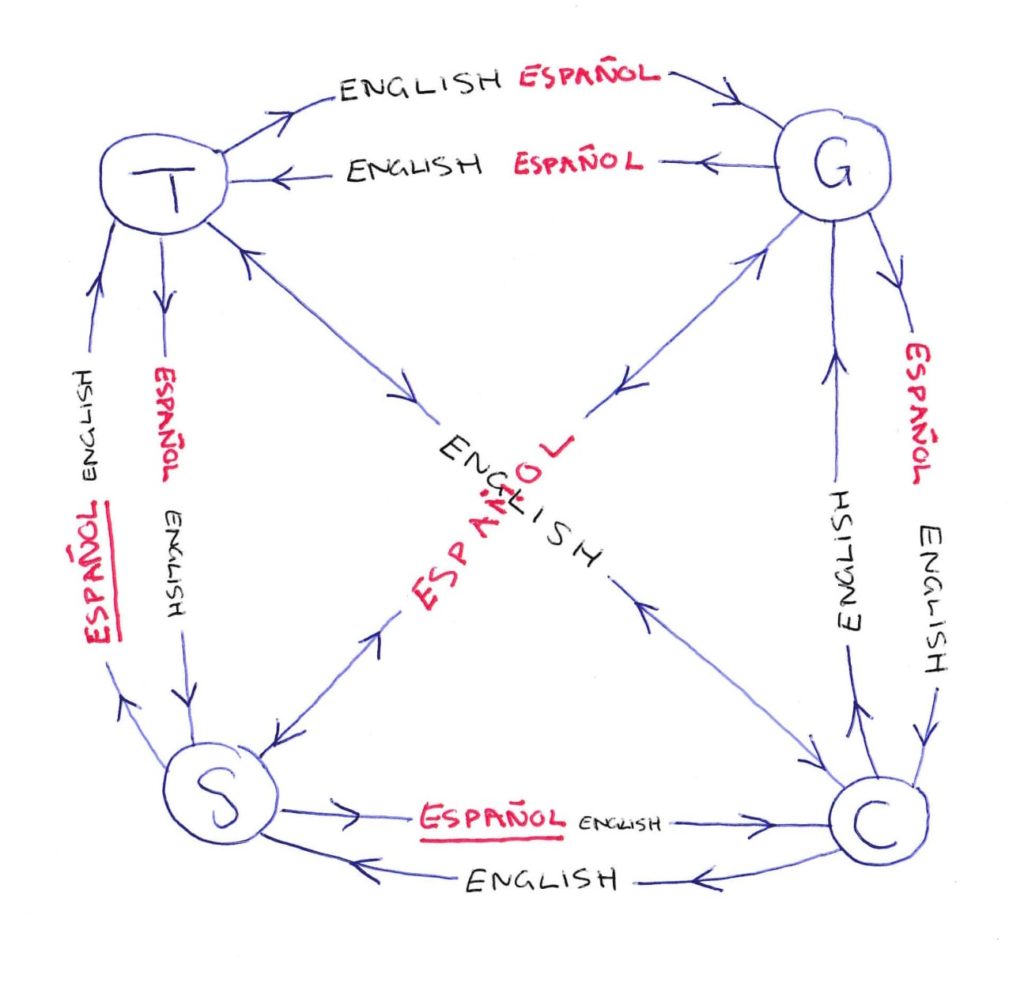Translators like to think that we facilitate communication, building linguistic bridges between the speakers (or readers) of one language and those of another. But that’s only half the story. In this job of mediating between two languages we are – we must be – almost neurotically aware of what belongs where. More specifically (although it’s not a word we like to use) we are terrified that our translations, in our target language, might be ‘contaminated’ by elements from the source language: by words, phrases and structures that have slipped through while our guard was down. As I work, scanning my writing for false friends, calques and phrases whose subtle clunkiness might reveal their foreign origins to the finely tuned ear, I resemble not so much a facilitator of cultural exchange as a sentinel, obsessed with ensuring that my text remains free of illegal linguistic aliens.
It is true that, as a literary translator, I can allow myself the occasional exotic flourish, a Spanish word to signal to the reader that, “hey, we’re all nice liberal types, no prejudices here”. But, if I am honest, what such gestures most resemble are the distracting tactics of the magician, the high fluttering fingers of the left hand that draw the spectator’s attention away from the sleight being performed by the right.
At home, there is none of this vigilance, none of this policing. I am Scottish. I speak English. And Spanish. I live – for now – in Spain. With my Spanish wife. And our teenage children. But this brief description only hints at the ways in which we constantly cross and re-cross the frontier between our two languages. Here there are no guards, no walls. Instead, every relationship, every conversation even, has its own combination.
I should clarify, before I go any further, that I am not talking about ‘Spanglish’ – by which I mean the deliberate combination of both Spanish and English words or phrases within a single sentence or utterance, which appears in communities where everyone – to a greater or lesser degree – masters both languages (Puerto Ricans in New York or Gibraltarians in Andalucia, for example). Indeed, Spanglish only works, can only exist, because of this dual mastery, because its speakers can combine the languages in ways that respect the internal logic of each, that draw on their strengths and on the effects that come from making those switches in mid-utterance. It is not something people do out of confusion or laziness.
We could do that. After all, our family is a little bilingual community of its own. And many families in our situation do. But we don’t. Of course, we sometimes use Spanish words in our English and vice versa. My children have a grandma (my mother) and an abuela (my wife’s mother) whatever language we are speaking. And sometimes, when a field is very strongly associated with a language, its terminology remains unchanged. When we talk about school, recreo never becomes break time, bachillerato never becomes baccalaureate (or whatever the English term would even be) and so on.
But what happens in my house is different again. It looks a little like this:

So… there are four people in our family, making six two-way linguistic relationships, each of which is different. Let’s start with the simple ones.
My daughter (C) and I talk to each other in English (I’m ‘T’ in the diagram). My wife (G) and our son (S) talk to each other in Spanish. My daughter talks to her brother in English. He generally (but not always) talks to her in Spanish.
My son generally speaks to me in Spanish. I go with his linguistic flow – when I remember – but default into English otherwise. My wife talks to our daughter in Spanish a lot of the time, but my daughter (almost) always talks to her mother in English.
My wife and I use both languages with each other with, I think, a mild preference on both sides for English. (Her English is better than my Spanish.) We often chop and change within conversations, usually for no obvious reason, although sometimes the motives can be guessed at: staking out the moral high ground is best done in your partner’s language while sulking is performed more effectively in one’s mother tongue.
And, of course, this diagram would have looked quite different two years ago – and may well look quite different two years from now. The point being that relationships between individuals are dynamic and shift over time, and where there is the option of choosing languages to express those relationships, then the choice of language will reflect some of those underlying dynamics.
By contrast, the relationship between two languages, at least for a translator, must be kept as stable as possible, so that Spanish is always Spanish and English is always English. And so I am a linguistic border guard in my work but a restless nomad with my family. Or, as the Spanish proverb has it: “in the blacksmith’s house, a wooden knife.”